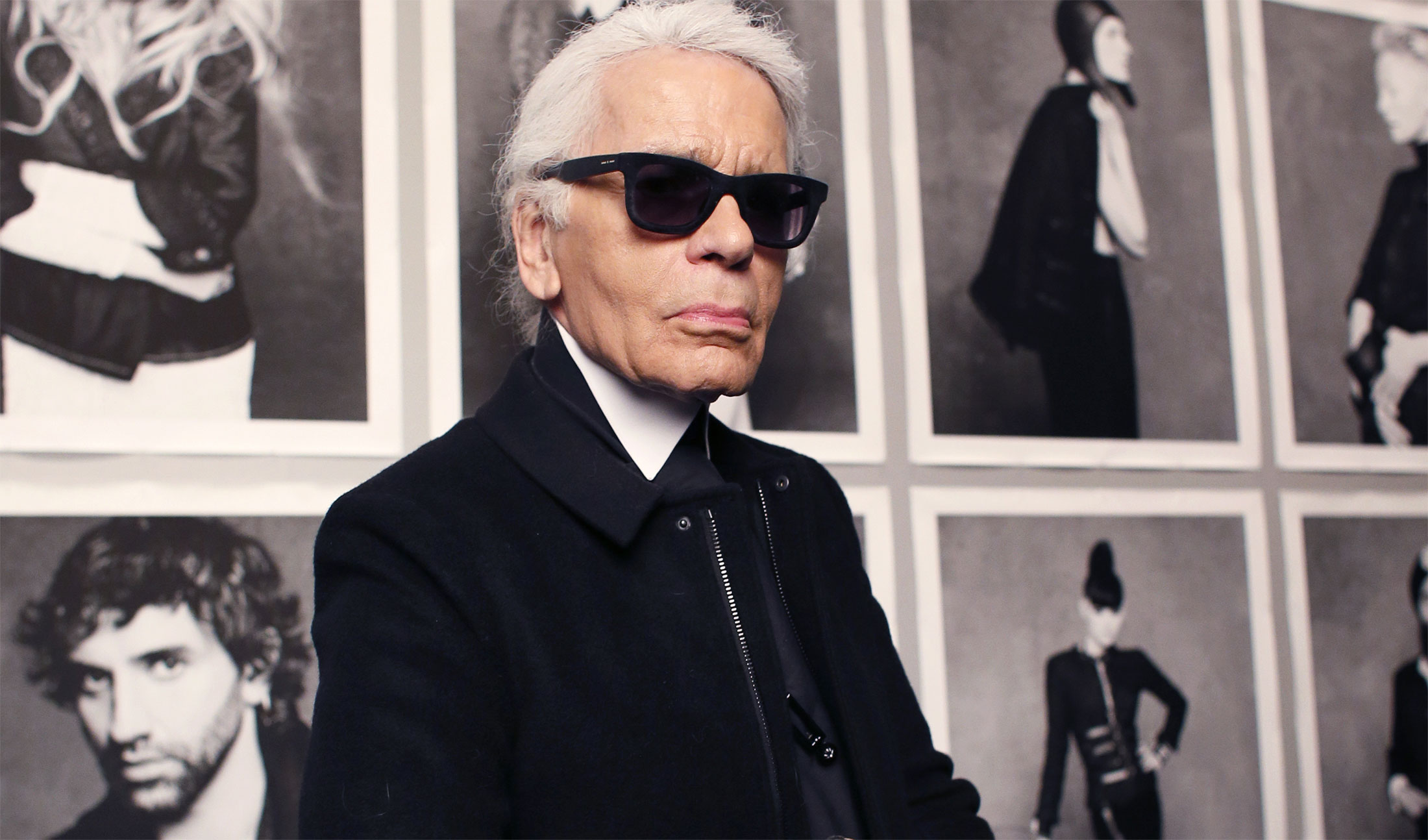In the fashion world, few names carry more weight than Karl Lagerfeld and Carine Roitfeld. So when the designer and fashion editor decided to join forces in a fashion-cum-art globetrotting exhibition, there was no doubt in anybody’s mind that it was going to be a runaway success.
The result of this titanic collaboration was The Little Black Jacket, in which Lagerfeld photographed celebrities and fashion personalities wearing a classic Chanel black jacket. Shot in black and white, the pictures are all very chic, if not very interesting. Lagerfeld described the concept for the exhibition and the book as a “pure accident”.
“There was so much storm that I don’t remember whose brain it was,” he told the Wall Street Journal. He and Roitfeld thought “it would be fun to make a book with the same jacket used in 120 different ways. The interesting thing is that one simple thing: a little jacket with four pockets. You can play so much and create 120 different types. It’s play time with an item that is timeless.” With Roitfeld doing the styling and Lagerfeld the shooting, a sensation was born.
The exhibition was clever because it invited outsiders who couldn’t afford so much as a Chanel sock into the private word of Lagerfeld and his chums
There is little point in discussing the virtues of The Little Black Jacket as art, or even as fashion; what it has been is a phenomenally successful promotional exercise that has drawn in huge crowds hoping to catch a glimpse of Karl and his mates looking fabulous. The exhibition has toured 16 cities since debuting in Tokyo in April 2012. Visitors were attracted to the exhibition, and compelled to buy the book later, not just for the images of celebrities hanging on the walls (which Lagerfeld has described as a “mixture of my friends, [Carine’s] friends, people we admire, people we know. It was all about totally different styles.”), but for a taste of luxury and glamour.
Runaway hit
None of this is entirely surprising. Chanel has experienced a rebirth over the last decade, and has taken back its rightful place as ringleader of the luxury fashion pack. The exhibition was clever because it invited outsiders who couldn’t afford so much as a Chanel sock into the private word of Lagerfeld and his chums. What was surprising, though, was the playground that Roitfeld chose.
Of the 16 cities that hosted the exhibition over the last 20 months, the typical New York-Paris-Milan trifecta of fashion capitals appeared on this list, but so did Seoul, Beijing and Moscow. In fact, a number of cities on the list of host venues would never have qualified as “fashion capitals of the world”. Huge vernissages in Dubai, São Paulo and Taipei, complete with the show’s stars and international musical guests, ostensibly hail these cities as part of the fashion ‘clique’. Parties in São Paulo and Singapore – the two last stops for the exhibition – were major events gathering international celebrities and the most fashionable locals. Bloggers and ‘it girls’ rubbed shoulders with movie stars and models, signalling a shift in the axis of fashion.
Emerging economies like China, Brazil and Russia are some of the most profitable markets for ultra-luxury brands like Chanel. As well as seemingly endless appetites for fashion, the ascending middle and upper classes in these countries appear to have deeper pockets than their counterparts in Europe and the US.
Fashion legacy
Bringing The Little Black Jacket and its accompanying fanfare to China and Brazil is part of Chanel’s larger marketing strategy. The Chinese luxury goods market will be worth $27bn by 2015, according to Mckinsey, and the mega-brand currently operates 10 boutiques in the country including a number in so-called ‘second-tier’ cities, with many more on the way. “China is a new business for us,” Bruno Pavlovsky, president of Chanel Fashion told Women’s Wear Daily. “I am sure we are number one in ready-to-wear luxury sales in China.”
Emerging markets are a fierce battleground for luxury brands vying for the affection of well-heeled shoppers, but Chanel has been unique in trading its rich legacy to boost sales, and The Little Black Jacket has been a huge part of this. China was the only country to have two cities hosting the exhibition. Add Hong Kong, Taipei and Singapore to the list of Asian destinations and the balance has been tilted away from Europe and towards the Far East.
That is not to say the choice of São Paulo and Dubai was any less significant. These two cities have emerged as bastions for the luxury goods markets, and the sheer volume of ultra-high-net-worth individuals and families located there meant omission by Chanel had the potential to be very costly indeed.
Buyers in China, Brazil, Russia and the Middle East look to brands like Chanel for the status they carry. So while the company might be eager to court more buyers in these markets, creatively, Chanel must remain very European, and there are no signs of that changing anytime soon. As The Little Black Jacket prepared to wind down in Singapore, clients appear to have been soothed, Lagerfeld’s ego has certainly been stroked, and the brand has emerged the clear winner.





